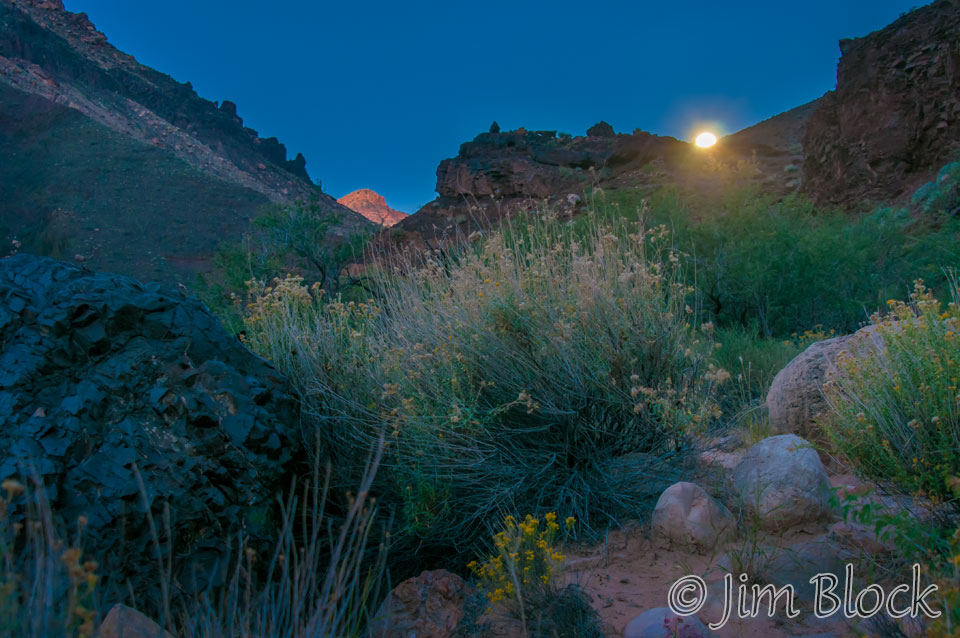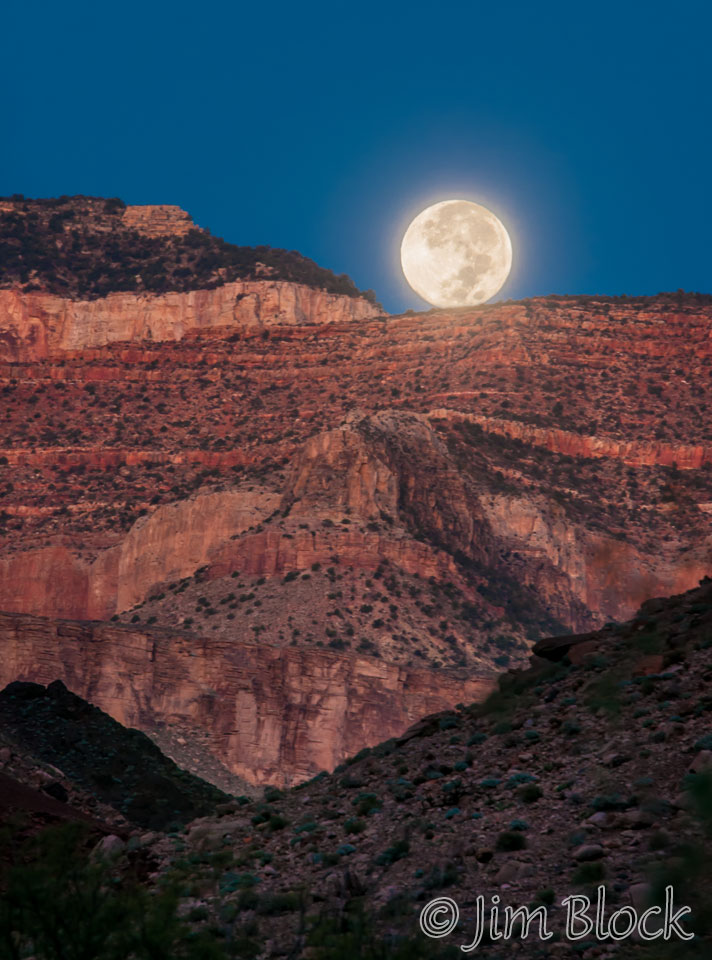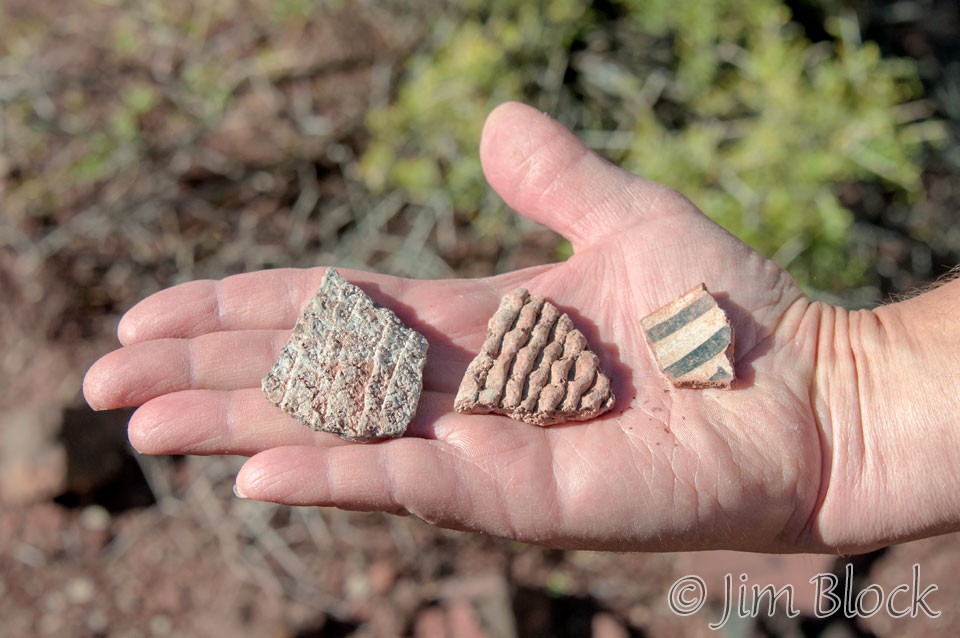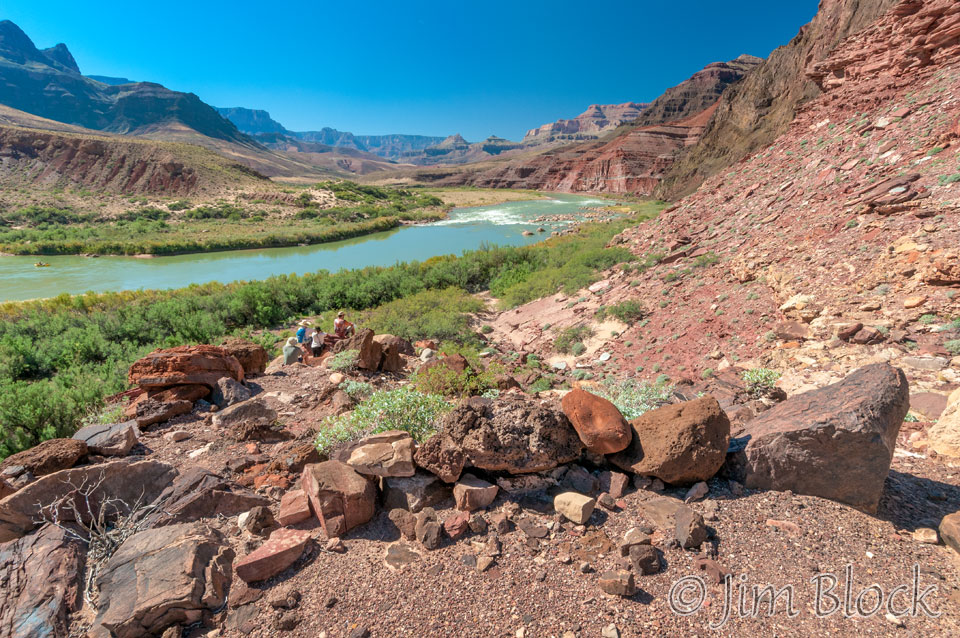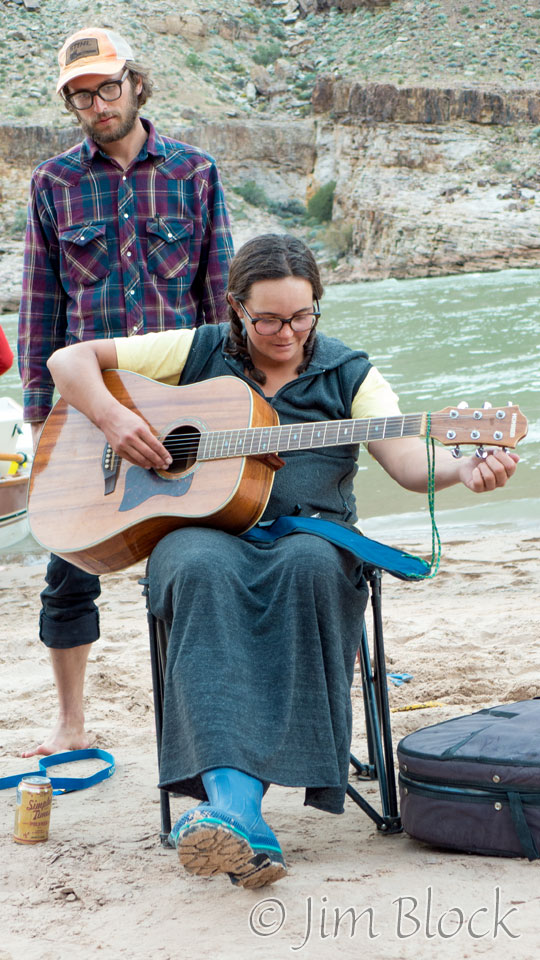
Yesterday ended with the hand-held 8-second exposure below that yielded an interesting view of our dinner preparations. I believe not all photos need to be sharp.

This day started with another moonlit photo that looks like daytime. On the right is this 30 second exposure. Those are stars in the sky. I photographed the full moon “setting” from near my camp site with the foreground lit by my headlamp. Then I realized that if I walked down to the river at the base of Lava Canyon I would still see the moon, the foreground would be lighter, and the view up the canyon grand.
Although the beach at Lava Chuar Camp was narrow, the camp sites were quite nice. They were scattered among the rocks and brush behind the beach. Below left is Tony and Nick’s site.
The night before some of the boatmen told scary stories too gruesome to repeat here. Nick told of his experience with strange poundings on the ground near his head when he tried to sleep above the beach near an old mine. So this morning a few of us hiked up to see the mine. It is in the photo on the right below.


I photographed the plants and rocks around the camp site and the cracked mud at the foot of the canyon by the river. You can see some of these photos in the slide show at the bottom of this page. Here is an impressionistic image of the Colorado River near the bottom of Lava Canyon.

Our sixth day on the river would feature travelling through the widest part of the Grand Canyon, where many ancient people lived, and a hike up to the Tanner Ruins. There we would get great views of the Palisades and find pieces of Puebloan pottery — look but do not take.



Here is a panoramic image from the ruins with Sarge taking a photo of me. You can click this image to get to a site where you can zoom way in then pan around. When you get there, click the double arrow above the image on the right to see it full frame. Please wait for the resolution to download. You can also use the + and – keys to zoom and the arrow keys to scroll. Or use the scroll wheel to zoom and the left mouse to drag.


After our hike we had lunch on the Tanner beach. Hors d’oeuvres included Oreo cookies which stimulated Charlie to issue a challenge: Lick the frosted half of the cookie, stick it to your forehead and by wiggling only your face — no touching — work it down into your mouth. Charlie worked diligently at this task only to have the cookie hit the sand. Tony took up the challenge and succeeded, as can be seen in the series below.
The canyon was indeed wide here, much different than it would be in a day when the walls closed in as we entered Marble Canyon after Hance Rapid. As you can see, this was another day of boring blue skies.
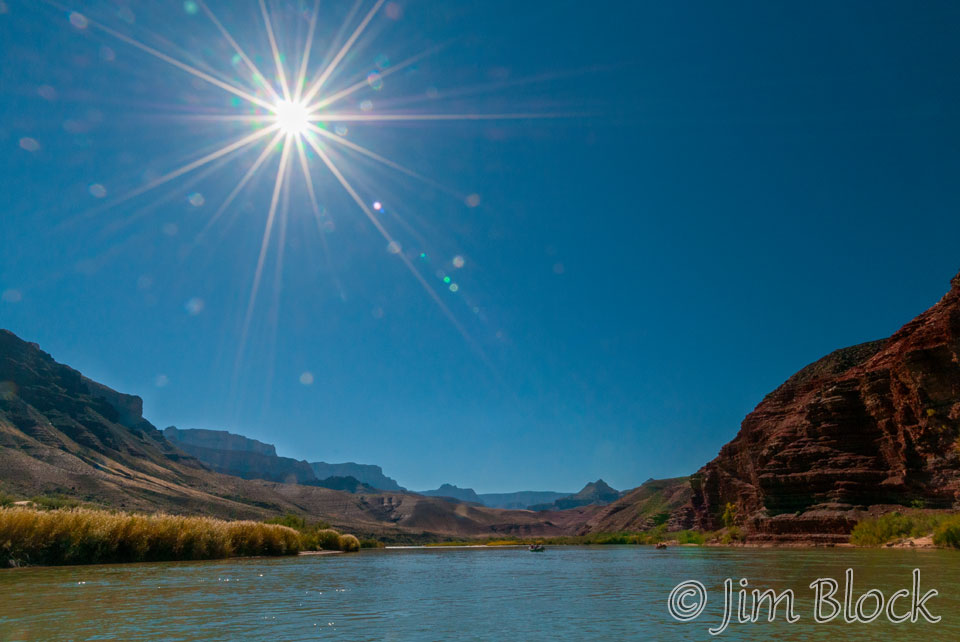
We ran the Tanner, Unkar, and Rattlesnake Rapids. I was able to get some shots of Rondo running the Unkar Rapid. Notice that Stephen in the bow in orange disappears in a few of the photos.

We pulled into the beautiful Escalante Camp around 3:00 pm. We were very pleased at the early arrival because it gave us time to bathe, shower, wash clothes, and relax. You can see the shower on an oar at the top left of the large photo below.
I was able to get a shot of the dory boatmen with my small LX7. They chided me for not using my big camera — don’t we rate a real camera? But when this opportunity arose I only had this one camera with me. I was heading up to the ledges above to dry in the sun after my bath and shower.



Stephen had also climbed above the camp to relax and contemplate the day. Here are two photos showing him standing near the edge of the cliff over the river.
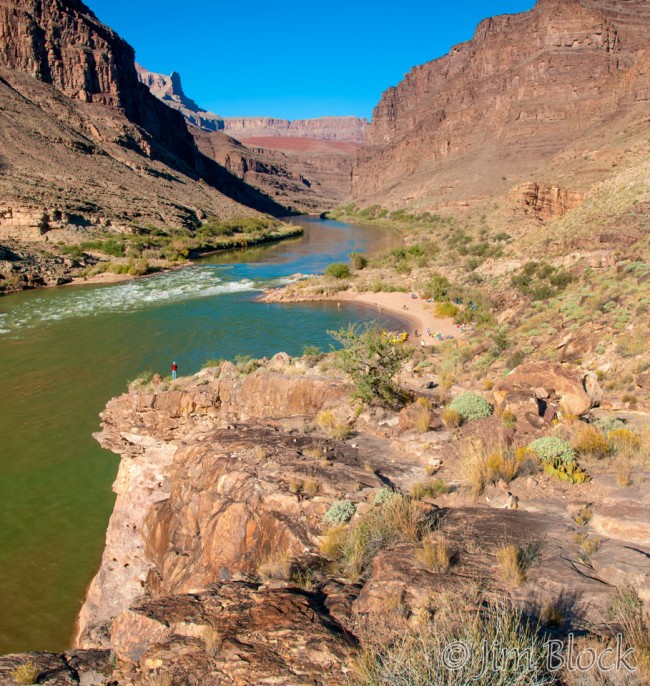

Over dinner Nick reviewed the day and told us we would take a hike from camp after breakfast. We were waiting for the water to come up so we could safely run Hance Rapid two miles downstream.
The boatmen know the rise and fall of the river like lobstermen in Maine know the tides. The flow in the river is controlled by the release of water from the Glen Canyon dam and, because of power demands, that happens mostly during that day and on week days. Since the average flow is 3 to 4 miles per hour, at about 75 miles downstream means that on Sunday we would get “Saturday’s water”.

Nick also told us about John Hance, a miner, rancher, guide, and storyteller, who the next rapid is named after. He mined asbestos a few miles downstream in the late 1800s. In his later years he told and retold the story many times of how he dug the Grand Canyon. When a young boy asked him, “where did you put all the dirt?” he changed the subject without answering. It is reported that on his deathbed he turned to his friend and asked, “where did I put that dirt?”.
Finally Nick warned that the next day was going to be long, cold, and very wet, not that the previous days didn’t give us large doses of the cold river.
Roger gave his view on what to wear on a day when one was going to get very wet, very often — basically just the opposite of what many had been doing. He suggested wearing as little as possible — “your skin is waterproof and dries faster than clothes”. In particular he suggested just a pair of shorts below the waist. So I packed my Marmot pants and raingear bottoms and followed his advice– I did wear the top with less under it. I felt it worked so that is what I did for the rest of the trip.
After dinner Stefanie tuned her guitar using her iPhone and serenaded us. I woke up at 10:15 pm, long after everyone had gone to bed, and made a photo of the camp lit by the moon.

Please enjoy the slide show that follows.


